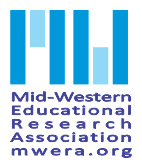Abstract
The objectives of this paper are three-fold. First, a model is proposed for unifying massive amounts of conceptual and numerical information flowing from the measures of the accountability movement in Ohio and the materials that are publicly available to educators. Second, this model is translated into useable forms of information that help teachers drive instructional practices in their classrooms. Third, the efficacy of this model to improve state-mandated proficiency scores at the district level is discussed. Ultimately the authors attempt to provide the readers with a rudimentary model of an educational Rosetta Stone to helps educators decipher the contents of the Ohio proficiency test at a deep and complex enough level to identify the basic and fundamental instructional needs of students.
Recommended Citation
Snodgrass, Donna
(2004)
"Creating the Rosetta Stone: Deciphering the Language of Accountability to Improve Student Performance,"
Mid-Western Educational Researcher: Vol. 17:
Iss.
2, Article 5.
Available at:
https://scholarworks.bgsu.edu/mwer/vol17/iss2/5


